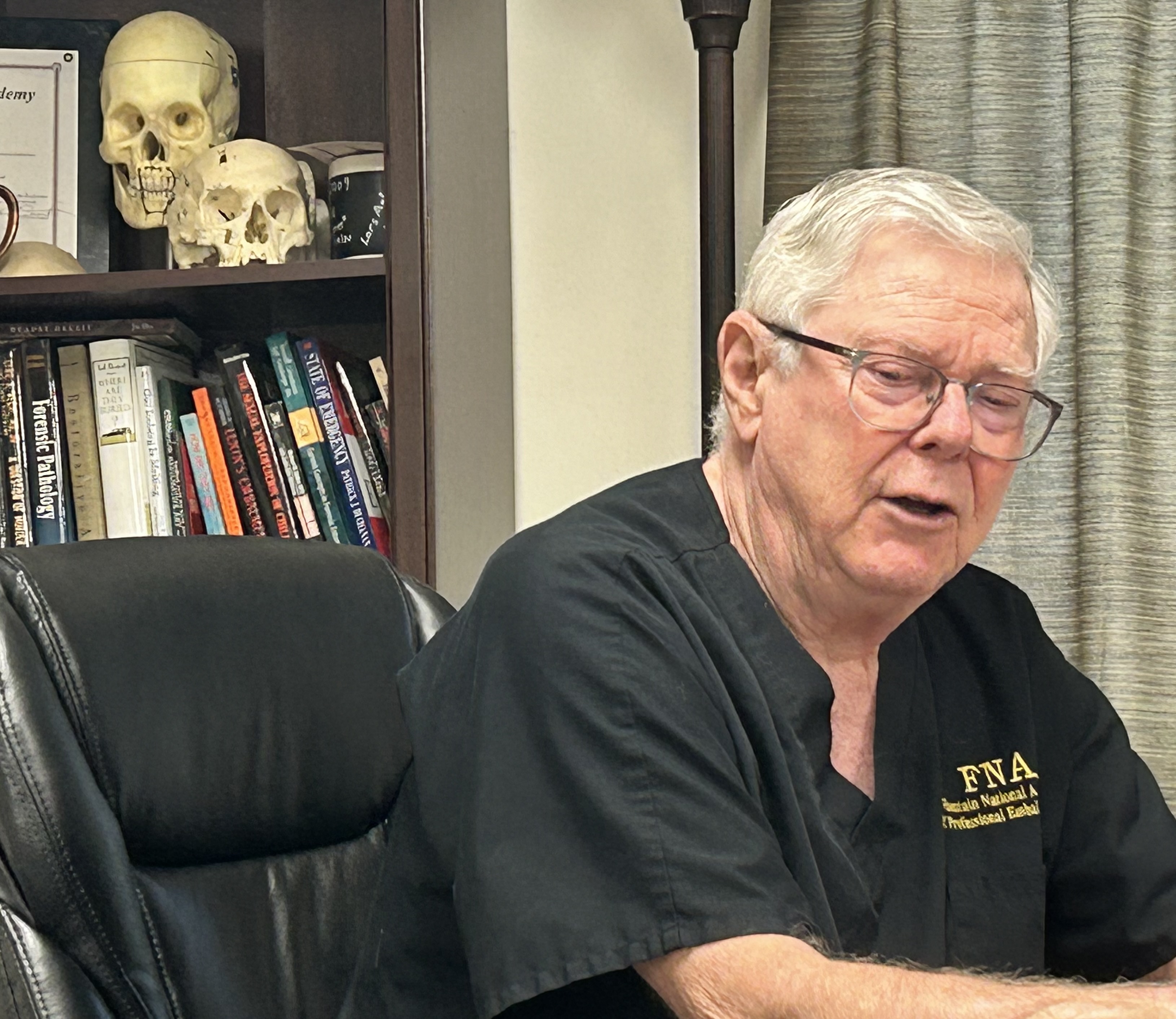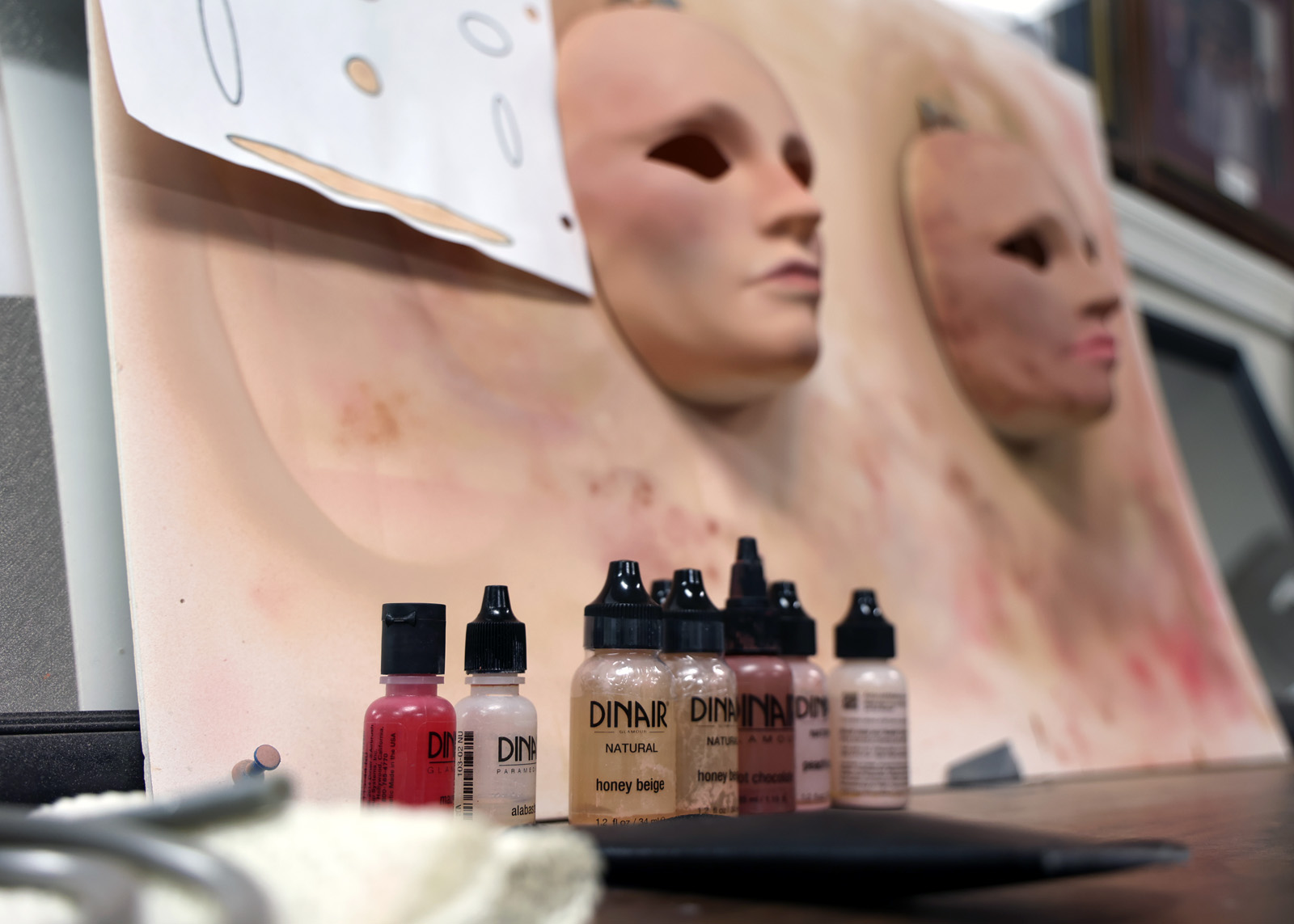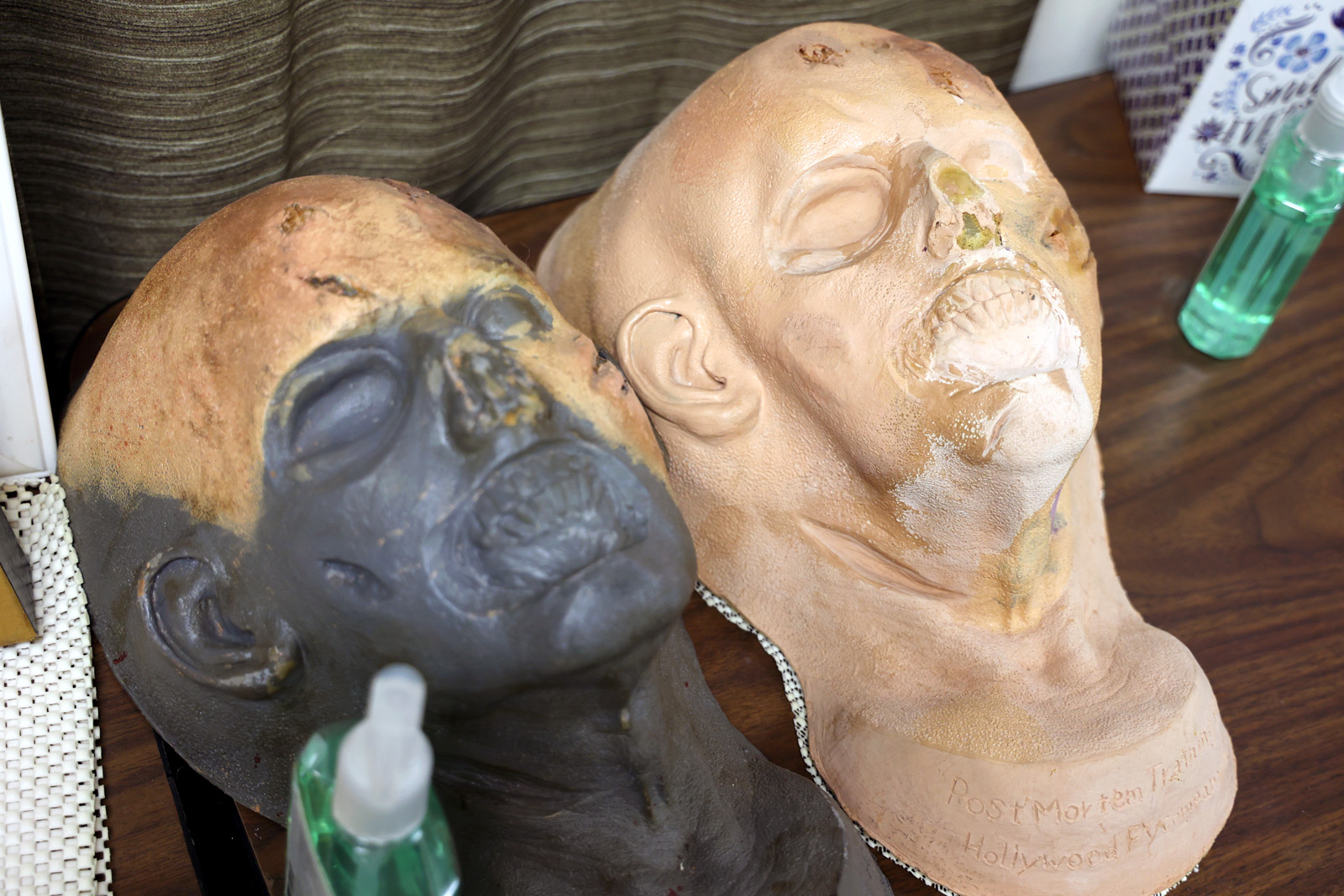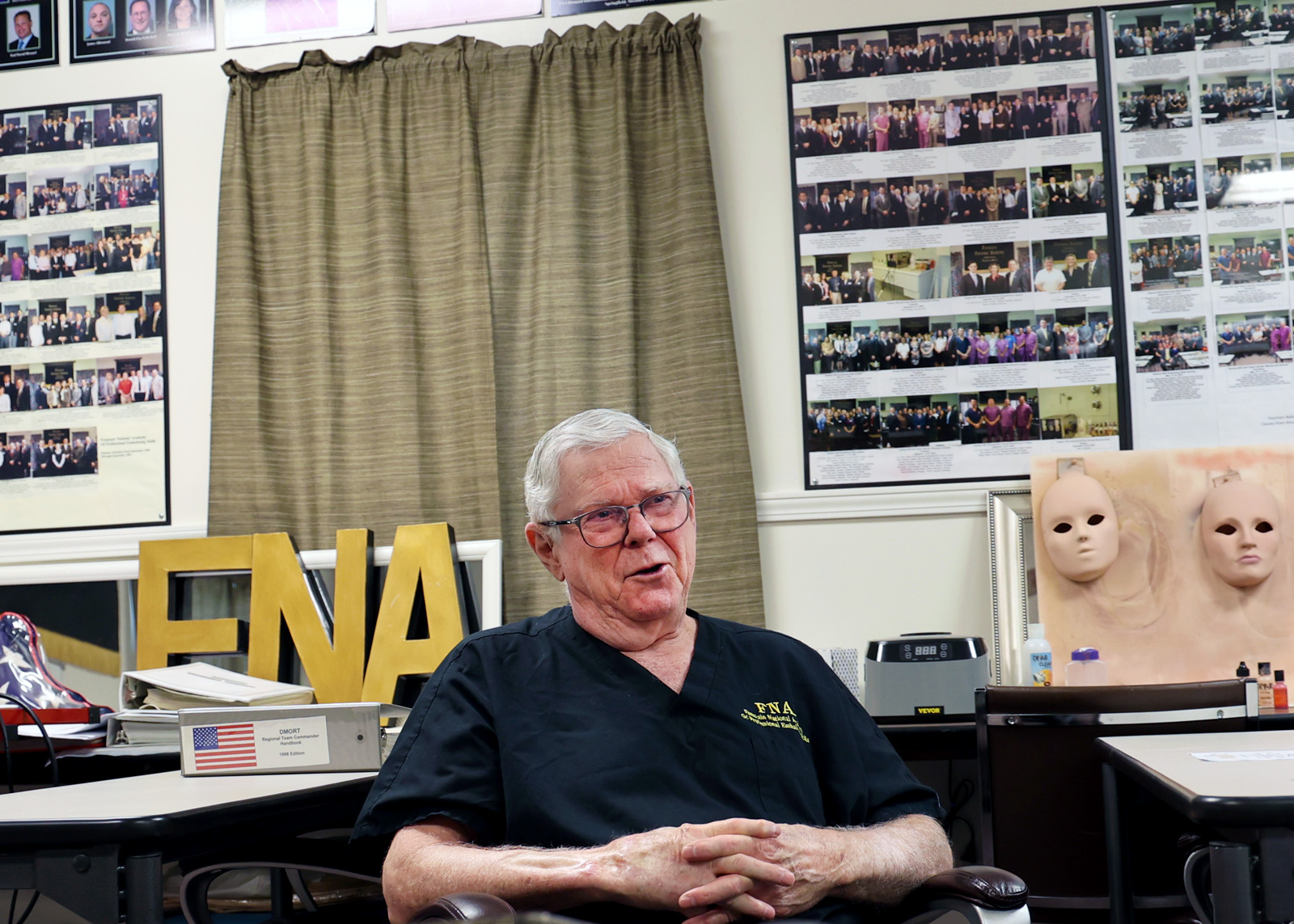OPINION|
Like the swallows returning to San Juan Capistrano, the embalmers will be returning to Springfield.
Are we a city in need of embalming?
Not necessarily. But Springfield happens to be home to Fountain National Academy at 2211 W. Norton Road. The academy was founded by Vernie Fountain, a man who has done a lifetime of embalming.

Every two years since 2010, Fountain, 74, has hosted an embalming and postmortem reconstructive surgery conference here in Springfield.
This year, he expects some 150 people from a variety of countries and continents to attend. Early registration was $695.
It will held be Thursday through Sunday, July 25-28, at the DoubleTree Hotel, 2431 N Glenstone Ave.
If you're out on the town that weekend and detect the odor of formaldehyde, it's probably the embalmers down at the other end of the bar. Formaldehyde is in the embalming fluids used to preserve dead bodies for visitations and funerals.
Who is Vernie Fountain?
Fountain graduated from the Kentucky School of Mortuary Science in 1976. It's now called the Mid-America College.
I interviewed him July 5 at the academy, a small building where he teaches classes on his lifelong profession, embalms bodies and does postmortem reconstructive surgeries.
In one room are several cadavers he's purchased. They will be used by students who come to Springfield to learn from Fountain.

“What's that smell?” I ask when I walk in.
That would be formaldehyde, he says.
Goal is an open-casket funeral
Fountain's academy is not a mortuary school. It's where embalmers go for advanced course work. The goal of the academy is the open-casket funeral, Fountain tells me.
A dead body can decompose in a single day or over a span of several days, depending on various conditions.

“Sometimes people will die at noon, and by early evening they're in pretty bad shape,” Fountain says. “It depends on the environment, their condition, what caused the death. When you take someone who, for example, might die from high fever, and they die with a high temperature. And they're in a room that's really warm — decomposition could set in within a short period of time.”
The smell of decomposition is not something you want at a funeral or wake. That's why bodies are embalmed.
Fountain is a big believer in the open-casket funeral.
In his experience, many times it is difficult for a person's loved ones to accept a death until they have seen the body, he says.

“I think a lot of people will say, ‘I don't need to see dad after he's dead. I want to remember how he was in life.' Well, there's a lot of value standing and seeing your dad dead. Right up here. (He points to his head.) Because the mind can tell you he's really not dead.
“Or it may be very important for you to stand at that casket and just simply say ‘goodbye,'” Fountain says.
Embalming declines as cremation rises
Nevertheless, Fountain says, embalming is on the decline across the United States.
“I hate to admit that, but that's just the truth,” he says. “Here's the long and short of it: I believe it's a cost factor. And embalming doesn't cost that much.”
How much?
About $400.

I should mention something Fountain didn't: there is an ongoing trend toward cremation.
A 2023 press release from the the National Funeral Directors Association, states:
“The U.S. cremation rate is expected to increase in the United States from 60.5% in 2023 to 81.4% by 2045.”
Embalming is not needed or required if the body is quickly cremated, but embalming can be required if the family first wants a public viewing prior to cremation.
Fountain's expertise is in the postmortem reconstruction of faces that have been heavily damaged by traumatic events, like gunshot wounds or traffic accidents.
“We've seen some of the worst cases you can imagine,” he tells me.
Fountain said he recently reconstructed the face of a man who died in a plane crash near Columbia, where Fountain worked many years with his first wife, who also was an embalmer. She is deceased. Fountain did the embalming of her body.
Fountain is married to Joy Robertson, a former TV reporter and anchor. They have two daughters.
Years ago, Fountain did the embalming and reconstructive work on 10-year-old Hailey Owens, who was abducted and murdered in Springfield in 2014 by Craig Wood. The girl was shot in the lower part of the back of her head.
Former students send him photos of their toughest reconstruction tasks
Fountain has a binder filled with photographs sent to him from his reconstruction students. The pictures offer evidence of their most challenging reconstructions.
The face of one man has a massive hole in his forehead. Others seem to have only half a face. One person appeared to have been extensively burned across the face.
A few photos did not even resemble faces; they looked like cuts of meat at a butcher's counter.

Yet somehow a face was created.
As I thought later about those photos, I wondered if the faces were, in fact, RE-constructed, or if, instead, they were constructed anew from nothing.
In the end, only the loved ones know how close the embalmers came to capturing the reality of what the person once looked like.
Fountain says he has heard from some students who sent him photos from work they were disappointed in, but were then uplifted by the result.
“The embalmer is not happy with it. And a family comes in and says, ‘Oh, my God, we get to see him!' These people are walking on clouds.”
Vernie Fountain has his own line of cosmetics
In cases of massive reconstruction, it is up to employees at the funeral home to caution family members at the open casket visitation to look but not touch, Fountain says.

That's because wax feels different from skin, Fountain says, and not everything set in place during reconstruction will hold up to the touch or the cheek-to-cheek connection of a loved one.
Fountain has created his own line of cosmetics for reconstructing the faces of the dead. It's called Post Mortem Restorative Art Services. He did so in conjunction with an embalming colleague in Ireland and a special-effects expert in Hollywood.
Some embalmers, he says, will purchase normal cosmetics that you could buy, say, at Walmart.
“But those cosmetics are for warm flesh,” he says. His are formulated for cold bodies.
Convince me your job isn't horrible
I asked Fountain to convince me he doesn't have a horrible job.
He is fond of telling stories, so he told me one.
“I went to — I think it was Indiana, as I recall — to reconstruct a man who was killed in an automobile accident.

“This man is an adult who died. His mother for his birthday, or whatever it was, bought him a brand new car. He gets the new car and says, ‘Mom, I want to take it for a drive.'”
But she hasn't licensed the vehicle yet. So she went to the license office and obtained the proper paperwork and put a license on the car.
The son takes the car out on a country road and loses control at 104 mph.
“His car starts hitting fence posts,” Fountain says, “and finally hit a mule in a pasture, killed the mule, and wound up hitting a railroad tie that had been buried in concrete to hold the gate up. And it caught him right here. (He points to his head.)
“I reconstructed him. ... Before we went to the casket to view him, I sat down with her in the lounge. I said you probably haven't eaten since this occurred, and she said, ‘No, I don't have an appetite.'
“I said there might be kind of a fog around you. She said, ‘Oh my God. Yes, there is.'
“I said, ‘when you get ready to go to the casket, I will walk with you. The rest of your family can fall behind, but I will walk with you. And I will be there.
“So I put my arm around her and we start walking down that little short hallway in the chapel. I'm sure it seemed like forever to her. She hadn't seen her son since he was alive.”
Fountain cautioned her to not touch her dead son's face.
“She's standing there looking at him in tears and crying. And pretty soon she said, ‘Mr. Fountain, can I touch his hair?'
“I said, ‘Yes, ma'am.'
“She touched his hair and just kept her hand there for quite a period of time. I don't know how long. And then she looked at me — all the other people were behind us —and she said, ‘Mr. Fountain, the fog has lifted.”

No, Fountain tells me, it is not a horrible job. Not at all.
“It's a rewarding job. When somebody's son or daughter dies in a traumatic event — and just like the lady that I described — you're able to walk up there to that casket and she's able to say ‘I'm at peace.' That's worth a million dollars in here. (He points to his heart.) It just is.”
This is Pokin Around column No. 197.

